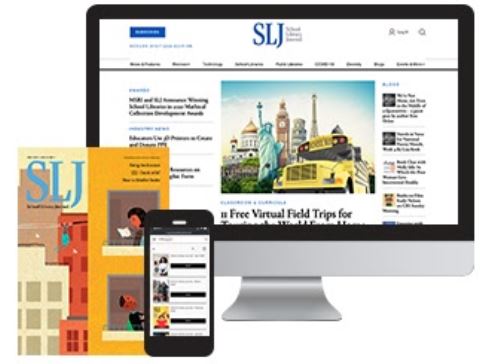Don’t Buy the Hype | Consider the Source
When it comes to teen reading, the NEA got it all wrong
Hi folks, I’m Marc Aronson, and I love nonfiction. Saying that sounds a bit like A.A., with nonfiction being my addiction. I’ll be hanging around this street corner every month, trying to hook you.
I’ll write about trends in nonfiction books for young readers: new design, approaches, and topics—or interesting old ones. This column aims to be like the best convention parties, where everyone who is doing something interesting in kids’ books has a voice. I’ll also pass along news from the academy, debates, and discussions sure to filter their way into your schools and libraries. I aim to be a kind of Distant Early Warning System.
Just about now an alarm bell of your own may be going off. Doesn’t he write and edit exactly the kinds of books he’s going to be discussing? Is his column going to be a billboard for his own books?
No.
Yes, I have many publishing commitments as an author, editor, and nonfiction book packager. But I write here as a fan of nonfiction, not a flack for any book or company. So let’s jump right in with the whole question of reading.
Check out “What Do You Want to Tell Us About Reading?” by Sandra Hughes-Hassel and Christina Lutz in the Winter 2006 issue of Young Adult Library Services (YALS). It could save this country millions and spare me a heart attack. For nearly two years, I have read and heard people repeat as gospel the National Endowment for the Arts’ (NEA) completely worthless 2004 report, “Reading at Risk.” Just this March, U.S. News & World Report’s cover story on book publishing repeated NEA Chairman Dana Gioia’s claim that the news about reading—especially among the young—was all bad. In fact, among those aged 18 to 24, the NEA asserted, there has been a 28 percent decrease in readers of “literature.” Gioia has argued that the decline in reading among the young is so severe that millions of federal dollars must be spent to correct it. (Chicken Little opened in theaters around the same time as the U.S. News article.)
Charles McGrath, former editor of the New York Times Book Review, was the first to point out that the NEA survey defined “literature” in a way that ignored nonfiction. The only question designed to catch nonfiction as well as fiction specifically excluded books required for “school or work.” Of course readers between 18 and 24 reported little leisure reading—they are drowning in assigned texts. To make it worse, the supposed decline in reading in that age group is a statistical fluke. Look carefully at previous surveys and you’ll notice that not all of them excluded assigned reading. So the “decline” is most likely just a measure of students who counted course work in one survey, and were careful not to in another.
Unlike the sloppy NEA survey, the careful YALS study of 214 students at an inner-city, largely African-American middle school, where 61 percent of the students are receiving free or reduced lunch, revealed that a great deal of reading is going on. To begin with, 73 percent of the students engage in leisure reading, and 24 percent read “constantly.” One of my suspicions about declines in reading is that, if they measure anything at all, it is a decline in the importance of books among more affluent kids with many other leisure options. There are whole categories of kids—such as those surveyed in the YALS study—who were simply not considered.
The study has many insights into reading, but the most popular form of reading of all was magazines and newspapers. Which brings me back to nonfiction: exclude it, and we have to spend millions on an invented reading crisis. Include it, and reading is busting out all over.
RELATED
The job outlook in 2030: Librarians will be in demand
The job outlook in 2030: Librarians will be in demand
ALREADY A SUBSCRIBER? LOG IN
We are currently offering this content for free. Sign up now to activate your personal profile, where you can save articles for future viewing






Add Comment :-
Be the first reader to comment.
Comment Policy:
Comment should not be empty !!!